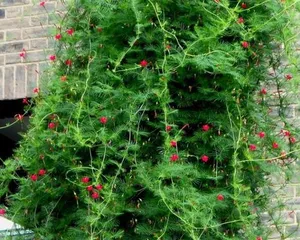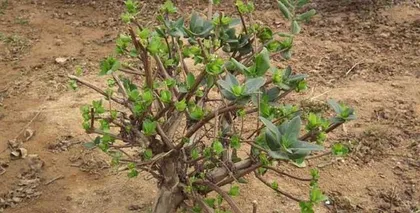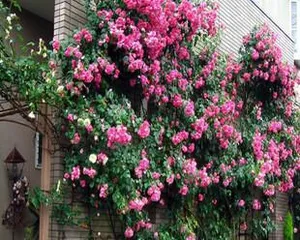In modern city life, many people live in small apartments, making walls a very important element. However, blank, monotonous walls are often unsatisfying. Therefore, planting some beautiful climbing flowers on the walls can not only add life and vitality to the interior but also serve a decorative function. How to choose and care for climbing flowers? This article will introduce them to you.

1. Boston Ivy - The Most Widely Planted Climbing Flower
Boston Ivy is one of the most common climbing plants and one of the most widely planted varieties. Its characteristics include adaptability to various climates, strong reproductive ability, fast growth rate, beautiful leaf morphology, and requiring minimal maintenance.
2. Clematis - A Variety That Prefers Abundant Sunlight
Clematis grows quickly and can cover walls rapidly, showing a vibrant side. It thrives in sunny environments and is not demanding on soil and climate, making it relatively easy to cultivate and care for.

3. Albizia Julibrissin - Common in European and Asian Climates
Albizia Julibrissin is a climbing flower commonly found in Europe and Asia. It can climb walls and grow rapidly, making it especially suitable for planting in urban areas with poor green environments. It should be noted that Albizia Julibrissin requires a warm and humid environment.
4. Climbing Roses - Can Form a Rich and Colorful Sea of Flowers
Climbing roses are an elegant and beautiful type of climbing flower. Due to their diverse colors, they can create a spectacular and colorful sea of flowers. However, climbing roses require high light exposure and have higher demands for water and fertilizer.
5. Variegated Holly - A Variety with Lower Maintenance Difficulty
Variegated holly is one of the varieties with lower maintenance difficulty, making it particularly suitable for beginners. It is characterized by rapid growth, strong resistance to pests and diseases, and beautiful appearance, making it very popular in the market.

6. Honeysuckle - Suitable for Balconies, Indoors, and Other Locations
Honeysuckle has relatively simple growth conditions and can adapt to environments like indoors and balconies, requiring little sunlight and water. Additionally, honeysuckle has a long flowering period and rich colors, providing excellent decorative effects.
7. Vines - Generally Suitable for Planting in High-Rise Buildings
Vines can often climb to considerable heights, making them ideal plants for high-rise buildings. They do not require high light intensity, but attention should be paid to shading to avoid direct sunlight.
8. Grapevines - Both Beautiful and Practical
Grapevines are not only beautiful but also practical. They can produce delicious grapes and bring green decoration to our courtyards, gardens, and balconies.
9. How to Choose Climbing Flowers
When choosing climbing flowers, it is necessary to consider growth conditions such as light intensity, temperature, and humidity, while also selecting flower colors and forms based on personal preference.
10. How to Plant Climbing Flowers
When planting climbing flowers, suitable soil needs to be selected, and maintenance measures such as fertilizing and watering should be carried out according to the plant's characteristics. At the same time, pruning should be done at the appropriate time to promote healthy plant growth.
11. How to Prune Climbing Flowers
Climbing flowers require regular pruning to maintain their beautiful shape and promote growth. For fast-growing varieties, more frequent pruning is necessary.
12. How to Prevent Pests and Diseases
Climbing flowers may be affected by pests and diseases, and timely measures need to be taken for prevention and control. Organic fertilizers, pesticides, and other methods can be used for prevention and treatment.
13. How to Provide Summer Care
Summer is a critical period for the growth and development of climbing flowers. Attention needs to be paid to the supply of water and nutrients. At the same time, damage to plants from high temperatures and excessive sunlight should be avoided.
14. How to Provide Winter Care
Winter is the dormant period for climbing flowers. It is important to keep them warm and avoid damage from cold climates. At the same time, watering should be moderate to avoid excessive or insufficient moisture.
15.
As multifunctional and beautiful plants, climbing flowers have become an indispensable part of modern city life. When selecting and caring for climbing flowers, various factors need to be considered, and maintenance measures such as fertilizing, watering, and pruning should be carried out according to the specific variety and characteristics. Only in this way can they show their best side in our homes.